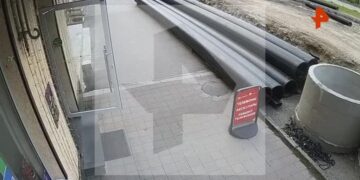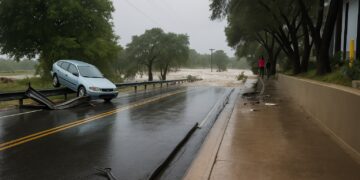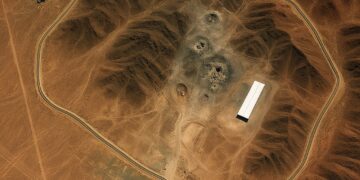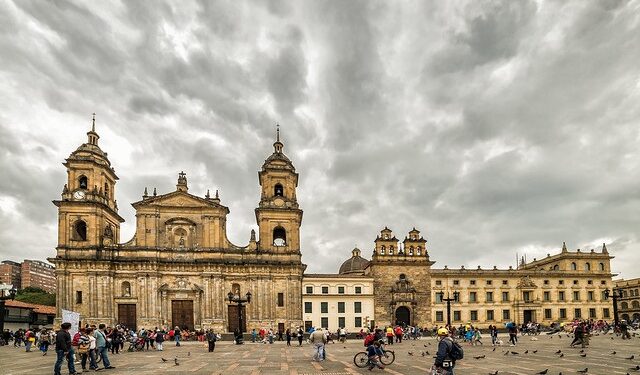Colombia’s Capital Rations Water as Reservoirs Run Dry: Climate Change Crisis Deepens
In a stark manifestation of climate change’s impact, Bogotá, Colombia’s bustling capital, has begun implementing water rationing measures as its reservoirs dwindle to critically low levels. This alarming situation underscores the growing environmental crisis facing not only Colombia but also many regions across the globe grappling with the effects of climate change. As the city confronts the reality of water scarcity, residents and authorities alike are forced to navigate the complexities of resource management amid increasing environmental stressors.
Background on Water Scarcity in Bogotá
Bogotá, situated at an altitude of 2,640 meters in the Andes, is home to approximately 8 million people. The city relies heavily on a combination of reservoirs that collect rainwater and snowmelt from the surrounding mountains. Historically, Bogotá has enjoyed a relatively stable water supply, but changing weather patterns and prolonged drought conditions have begun to strain this critical resource.
In recent years, Colombia has experienced significant fluctuations in rainfall, leading to periods of severe drought interspersed with intense rainfall and flooding. This erratic weather pattern is primarily attributed to climate change, which is causing shifts in temperature and precipitation patterns across the region.
Current Water Rationing Measures
As reservoir levels continue to decline, the Bogotá Aqueduct and Sewer Company (EAAB) has announced a series of water rationing measures aimed at conserving the dwindling supply. These measures include scheduled water cuts, reduced pressure in distribution systems, and public awareness campaigns encouraging residents to conserve water.
City officials have emphasized that the rationing is necessary to ensure that the available water supply can meet the needs of the population. They have also urged citizens to adopt water-saving practices, such as reducing outdoor water use and fixing leaks in their homes. Nevertheless, the measures have sparked frustration and anxiety among residents, many of whom are unaccustomed to such restrictions.
Public Reaction and Challenges
The reaction among Bogotá’s residents has been mixed. While many understand the necessity of rationing, others express frustration over the sudden changes and the perceived lack of preparedness from the government. Some residents have reported difficulties accessing water during scheduled cuts, leading to increased tensions in certain neighborhoods.
The situation has also highlighted broader issues related to infrastructure and governance. Critics argue that the city should have invested more in water conservation technologies and infrastructure improvements long before the current crisis. Aging pipelines and inefficient distribution systems exacerbate the problem, leading to significant water losses before it even reaches consumers.
Additionally, informal settlements on the outskirts of the city face even greater challenges. Many of these communities lack reliable access to public water supplies and often rely on expensive private vendors for their water needs. The rationing measures have only intensified these disparities, raising concerns about social equity and access to essential resources.
The Role of Climate Change
Colombia’s water crisis is emblematic of a larger global trend. Climate change is affecting weather patterns worldwide, leading to increased instances of drought, flooding, and other extreme weather events. In Colombia, the impact is particularly pronounced, with rising temperatures and shifting rainfall patterns resulting in unpredictable water availability.
The Intergovernmental Panel on Climate Change (IPCC) has warned that regions like Colombia are particularly vulnerable to the effects of climate change. As temperatures rise, the Andes mountains—home to critical glacier reserves—are losing ice at alarming rates. This loss threatens not only water supply but also ecosystems and agriculture in the region.
Local and Global Implications
The water crisis in Bogotá serves as a case study for other urban areas facing similar challenges. Cities around the world are grappling with the effects of climate change, often resulting in water shortages and increased competition for resources. As urban populations grow, the demand for water will only intensify, making effective resource management crucial.
In response to the crisis, Colombian authorities are exploring various strategies to promote water conservation and improve infrastructure. This includes investments in rainwater harvesting systems, wastewater recycling, and the restoration of natural ecosystems that can help regulate water flow.
Moreover, international cooperation and support will play a critical role in addressing the challenges posed by climate change. Colombia has been active in various global initiatives aimed at promoting sustainability and climate resilience. Collaborative efforts with other nations and organizations can help to share knowledge, resources, and technologies necessary for tackling these urgent issues.
Government Response and Future Strategies
Colombian authorities are aware that addressing the water crisis requires a multifaceted approach. In addition to immediate rationing measures, long-term strategies are essential for building resilience against future climate impacts. The government is calling for an integrated water management plan that considers the entire watershed, taking into account the needs of urban populations, agriculture, and natural ecosystems.
As part of this strategy, investments in infrastructure are paramount. Upgrading aging pipelines, improving distribution efficiency, and implementing advanced monitoring technologies can help reduce water losses and ensure that available resources are used more effectively.
Furthermore, public education campaigns are critical in fostering a culture of water conservation. Engaging communities in understanding the importance of sustainable water use can lead to meaningful behavioral changes that contribute to long-term solutions.
The Role of Technology
Technology will play a key role in addressing the water crisis in Bogotá and beyond. Innovations in water management systems, such as smart meters and data analytics, can provide valuable insights into consumption patterns and help identify leaks or inefficiencies in the distribution network. Additionally, advancements in desalination and water recycling technologies can offer alternative sources of water for urban areas facing shortages.
Collaboration with academic institutions and the private sector can facilitate the development and implementation of these technologies. By fostering partnerships, the government can leverage expertise and resources to build a more resilient water infrastructure.
International Support and Collaboration
As the impacts of climate change become increasingly evident, international support and collaboration will be essential for addressing the challenges faced by Colombia and other vulnerable nations. Financial assistance, technical expertise, and knowledge sharing can help bolster local capacities to manage water resources more effectively.
Colombia has been actively participating in global climate initiatives, such as the Paris Agreement, and is committed to reducing greenhouse gas emissions while adapting to the impacts of climate change. Continued collaboration with other countries and organizations will strengthen these efforts and enhance the nation’s resilience to future climate-related challenges.
Conclusion
The water crisis in Bogotá is a pressing reminder of the urgent need for action in the face of climate change. As the capital grapples with the reality of water rationing and dwindling reservoirs, it also presents an opportunity for innovation, collaboration, and a rethinking of how urban areas manage their water resources. The challenges may be daunting, but with proactive measures and a commitment to sustainability, Bogotá can pave the way for a more resilient future.














































